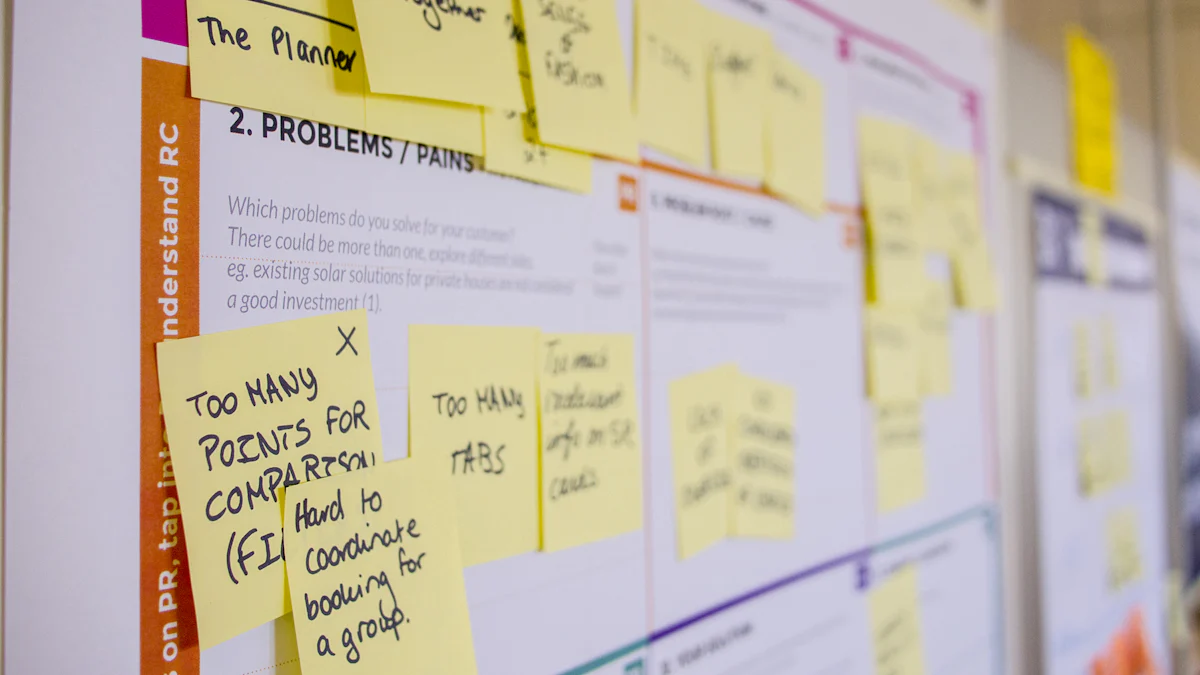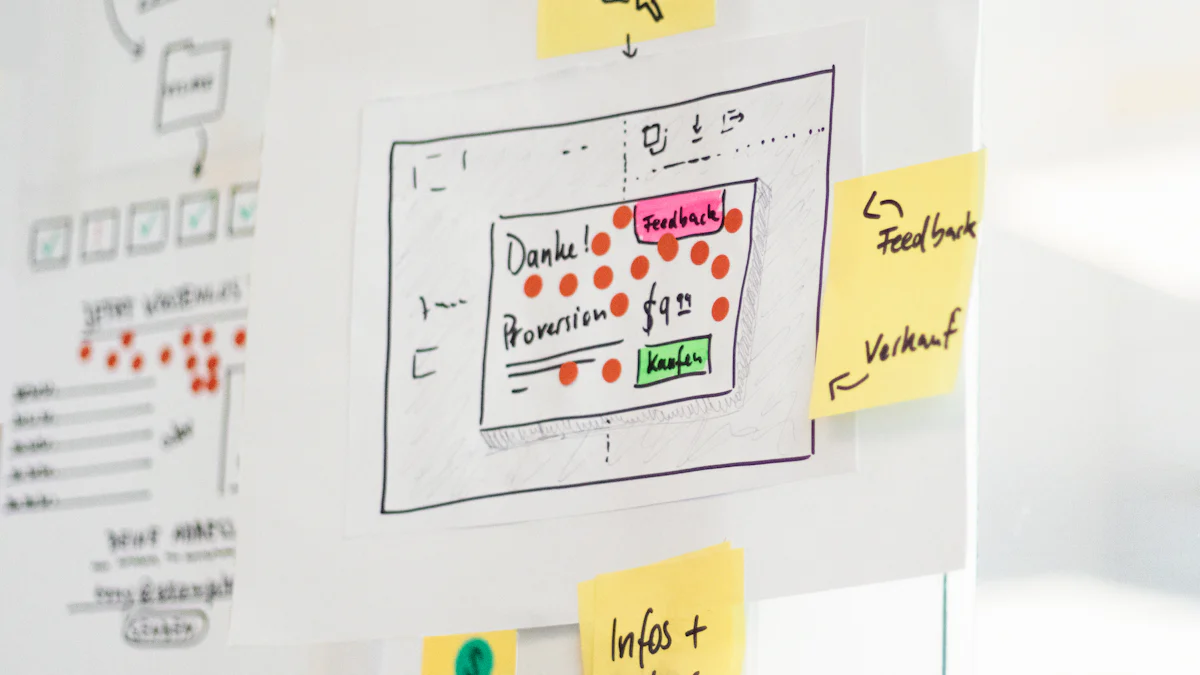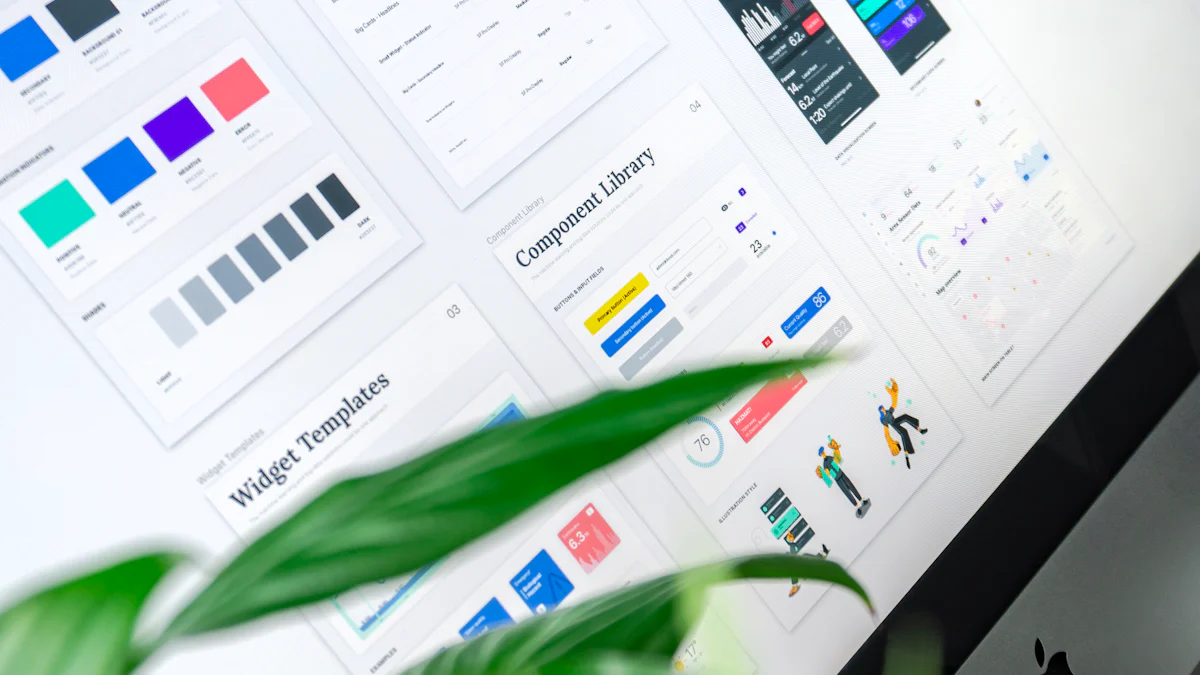Lean Product Development Principles That Boost Business Success

Lean product development focuses on delivering maximum value while reducing waste. This approach empowers you to streamline processes, prioritize customer needs, and foster innovation. Companies like Apple and Tesla have embraced these principles to create groundbreaking products that resonate with users. By adopting lean product development principles, you can achieve faster time-to-market, lower costs, and improved product quality. For example, Spotify reduced release cycles from weeks to days, enhancing efficiency and customer satisfaction. When you align your strategies with lean principles, measurable business success becomes achievable.
Key Takeaways
Lean product development increases value by cutting waste. Simplify steps to work faster and better.
Focus on what customers want by asking for feedback. This helps your products fit their needs and be unique.
Always aim to improve. Make small changes often to make your work and products better.
Use feature flags to release updates slowly. This helps you test safely and get useful feedback from users.
Understanding Lean Product Development

What Is Lean Product Development?
Lean product development is a methodology inspired by lean manufacturing principles. It focuses on creating products efficiently by eliminating waste, optimizing processes, and continuously improving. This approach prioritizes customer value and encourages iterative development to refine products over time. Originating from Toyota in the late 20th century, lean product development evolved from the Toyota Production System, which aimed to meet diverse consumer demands. By adapting early concepts like standardization and waste reduction, Toyota introduced Just in Time (JIT) production methods, which became the foundation of lean practices.
The core principles of lean product development include understanding and capturing value, eliminating waste, and creating knowledge that can be reused. You also work in parallel with your team to enhance collaboration and ensure every step in the process adds value. This methodology sets up a flow of information that aligns with customer needs, helping you perfect both the product and the process.
Benefits of Lean Product Development
The benefits of lean product development extend across industries. By minimizing waste and maximizing value, you can eliminate inefficiencies and respond quickly to market trends. This approach enables faster time to market through streamlined processes, helping you stay competitive. For example, lean practices reduce physical waste and wasted working hours, allowing you to focus on tasks that truly matter. Repeated testing and benchmarking against competitors improve results, while continuous feedback empowers stakeholders and enhances collaboration.
Lean product development also provides flexibility to adapt to changing market demands. By designing for easy replication, you can simplify production and track errors more effectively. This process builds knowledge from mistakes, leading to better product designs in the future. Ultimately, the benefits of lean product development include a better end-user experience and clear success metrics for tracking performance.
Why Businesses Should Adopt Lean Product Development
Adopting lean product development can transform your business. This methodology helps you eliminate unnecessary steps, reduce costs, and improve efficiency. By focusing on customer value, you can create products that meet user needs and stand out in the market. Lean practices also encourage continuous improvement, allowing you to refine your processes and stay ahead of competitors.
Businesses that embrace lean product development often see measurable success. For instance, companies can speed up product creation by cutting unnecessary steps and streamlining workflows. This adaptability is crucial in today’s fast-paced markets, where consumer expectations constantly evolve. By integrating lean principles, you can build a culture of innovation and collaboration, ensuring long-term growth and profitability.
Lean Product Development Principles
Focus on Customer Value
Focusing on customer value ensures that every step in your product development process aligns with user needs. This principle emphasizes understanding what your customers truly want and delivering solutions that meet those expectations. Companies like Apple and Amazon have mastered this approach:
Apple prioritizes user-friendly designs and seamless experiences, building a loyal customer base and a strong brand reputation.
Amazon’s customer obsession drives its success, offering competitive prices, fast delivery, and exceptional service.
By adopting this mindset, you can deliver value that resonates with your audience. Start by gathering feedback directly from users. Use this data to refine your product and address pain points. When you focus on customer value, you create better quality products that stand out in the market.
Eliminate Waste
Eliminating waste is a cornerstone of lean product development principles. Waste in product development can take many forms, such as unnecessary handoffs, waiting for decisions, or redundant tasks. These inefficiencies slow down your process and increase costs. Common types of waste include:
Handoffs that cause delays or misunderstandings.
Waiting for approvals or data, which can extend project timelines.
Rework due to errors or miscommunication.
Overdoing tasks, like generating unused data.
To address these issues, implement tools like value stream mapping to visualize workflows and identify bottlenecks. Techniques such as Kanban and Kaizen also help streamline processes and improve results. By reducing waste, you save time and resources, allowing your team to focus on delivering value.
Build Quality In
Building quality into your product development process ensures that you create better quality products from the start. This principle involves embedding quality checks and improvements throughout the development cycle rather than treating them as afterthoughts. Encourage creativity and collaboration within your team to foster innovation. Use customer feedback at every stage to align your product with user expectations.
Adopting tools like Figma for design collaboration or Productboard for organizing feedback can enhance your process. Balancing speed with quality is also essential. Rushing to meet deadlines without considering quality can lead to costly rework. By prioritizing quality, you not only reduce waste but also improve customer satisfaction and long-term success.
Optimize the Whole
Optimizing the whole means viewing your product development process as a unified system rather than isolated parts. This principle encourages you to focus on the entire workflow, ensuring every step adds value and aligns with your goals. When you optimize the whole, you avoid sub-optimizing individual components at the expense of overall efficiency.
Start by identifying bottlenecks or inefficiencies in your process. Tools like value stream mapping can help you visualize workflows and pinpoint areas for improvement. For example, if your design team works faster than your testing team, delays may occur. Addressing these gaps ensures smoother collaboration and faster delivery times.
Cross-functional collaboration plays a key role in optimizing the whole. Encourage teams to share knowledge and work together to solve problems. This approach not only improves results but also fosters innovation. By aligning efforts across departments, you create better quality products that meet customer expectations.
Companies that embrace this principle often see significant benefits. For instance, Procter & Gamble integrates innovation into its workflows, ensuring efficiency and high-quality outcomes. Similarly, General Electric uses Lean Manufacturing to reduce waste and enhance productivity. These examples highlight how optimizing the whole can drive success.
Continuous Improvement
Continuous improvement focuses on making small, incremental changes to enhance your product development process. This principle aligns with lean product development by emphasizing rapid learning and adaptation. Instead of waiting for major overhauls, you refine your processes and products over time.
Encourage your team to adopt a mindset of experimentation and learning. Amazon, for example, views failures as opportunities to improve. Apple employs iterative design processes to perfect its user experience. Coca-Cola engages with customers to gather feedback and refine its offerings. These companies demonstrate how continuous improvement leads to better quality products and long-term success.
To implement this principle, collect feedback regularly and analyze performance metrics. Use this data to identify areas for improvement and test new ideas. Small adjustments can lead to significant benefits, such as reduced waste, faster delivery times, and higher customer satisfaction. By committing to continuous improvement, you ensure your processes remain efficient and adaptable.
How Feature Flag Technology Enhances Lean Product Development
What Are Feature Flags?
Feature flags are tools that allow you to control the activation of specific features in your software without deploying new code. They separate deployment from release, enabling you to test features incrementally and gather user feedback effectively. This approach aligns with lean product development principles by supporting controlled rollouts and experimentation. You can toggle features on or off in real time, which minimizes risks and enhances efficiency. Feature flags empower your team to make data-driven decisions, ensuring that only valuable features reach full deployment.
Benefits of Feature Flags in Lean Development
Feature flags offer several advantages that align with lean development practices:
Gradual rollout of features reduces deployment risks.
Monitoring performance and gathering feedback from a small user subset ensures better decision-making.
Quick rollback options act as a safety net, minimizing downtime.
Continuous delivery becomes possible by deploying incomplete features safely.
Personalized user experiences are achievable by tailoring features to specific segments.
Feature flags also decouple code deployment from feature releases, giving you precise control over your software. They enable safer experiments with real users in production and support A/B testing for actionable insights. Faster release cycles and improved collaboration among teams further enhance your development process. By using feature flags, you can deliver better user experiences through gradual rollouts and frequent iterations.
Why FeatBit Is the Best Feature Flag Tool
FeatBit stands out as a powerful feature flag tool with unique capabilities:
Feature | Description |
|---|---|
Real-time feature monitoring | Assess feature performance and identify issues quickly. |
Selective and progressive rollout | Gradually release features and customize for different user groups. |
Granular user targeting | Target features based on specific user attributes for better testing. |
Extensive SDK library | Support for various programming languages and environments. |
Existing flag management | Manage multiple feature flags with search and editing tools. |
User-friendly interface and reporting | Intuitive management with clear metrics and data visualization. |
FeatBit simplifies feature flag implementation, making it an essential tool for lean product development. Its robust features ensure efficient rollouts, better testing environments, and enhanced collaboration across teams.
Real-World Benefits of Lean Product Development

Improve Time to Market
Lean product development helps you deliver products faster by streamlining workflows and eliminating unnecessary steps. This approach ensures that your team focuses on tasks that add value, reducing delays and inefficiencies. Companies like Spotify and Toyota have demonstrated how lean principles can improve time to market:
Spotify used an agile feedback loop to refine its music streaming features, solidifying its position as an industry leader.
Toyota incorporated cross-functional team input to enhance vehicle production and address post-production issues efficiently.
Tesla also leveraged lean principles to develop the Tesla Roadster. By focusing on a minimum viable product (MVP) and rapid iterations, Tesla achieved faster delivery while maintaining quality. Similarly, Airbnb started with a simple MVP, gathered user feedback, and pivoted to meet market demands. These examples highlight how lean practices can help you stay competitive in fast-paced markets.
Enhance Customer Satisfaction
Lean product development prioritizes customer needs at every stage, ensuring that your products meet expectations. This focus on value creation fosters customer loyalty and satisfaction. By delivering high-quality products with fewer defects, you can enhance the user experience. For instance, Dropbox reported increased customer satisfaction scores and higher retention rates after adopting lean practices.
When you align your development process with customer feedback, you create products that resonate with users. Lean principles also emphasize continuous improvement, allowing you to refine your offerings based on real-world insights. This iterative approach ensures that your products consistently meet or exceed customer expectations, leading to long-term success.
Boost Team Collaboration and Efficiency
Lean product development fosters collaboration by encouraging cross-functional teamwork and clear communication. Standardized workflows reduce confusion and streamline operations, enabling your team to work more efficiently. Companies like Spotify, Adobe, and Microsoft have benefited from enhanced collaboration through lean practices:
Spotify implemented A/B testing and MVPs, reducing its release cycle from weeks to days.
Adobe focused on customer value, improving resource allocation and teamwork.
Microsoft responded effectively to customer feedback, reducing software bugs and creating a more stable operating system.
Lean methods also promote flexibility, allowing your team to adapt quickly to market trends and user needs. By fostering a culture of continuous improvement, you can enhance both collaboration and efficiency, leading to better outcomes for your business.
Drive Profitability and Reduce Costs
Lean product development helps you achieve financial success by streamlining processes and focusing on value. This approach reduces unnecessary expenses and maximizes revenue potential. By adopting lean principles, you can create a more efficient workflow that drives profitability.
Faster Time-to-Market: Lean practices accelerate product development, allowing you to launch products quickly. This speed helps you respond to market demands and capture revenue opportunities before competitors.
Reduced Development Costs: Eliminating waste and prioritizing essential tasks lowers operational expenses. You can allocate resources more effectively, increasing profit margins.
Improved Product Quality: Continuous improvement ensures higher-quality products. Fewer defects mean reduced recall costs and greater customer satisfaction, which boosts profitability.
Better Risk Management: Rapid prototyping and iterative testing help you identify risks early. This proactive approach minimizes costly mistakes and ensures financial stability.
Enhanced Customer Satisfaction: Meeting customer needs fosters loyalty and repeat business. Satisfied customers contribute to long-term profitability through referrals and consistent purchases.
For example, Toyota’s lean manufacturing principles reduced production costs while maintaining high-quality standards. Similarly, Dropbox improved its product quality through lean practices, leading to higher customer retention and increased revenue. These examples show how lean methods can transform your business.
You can also use tools like feature flags to reduce risks and optimize costs. Feature flags allow you to test features incrementally, avoiding large upfront investments in unproven ideas. By rolling out features gradually, you minimize waste and focus on what delivers value. This strategy aligns with lean principles, helping you achieve financial success while maintaining efficiency.
Adopting lean product development not only reduces costs but also positions your business for sustainable growth. By focusing on value and efficiency, you can build a profitable and resilient organization.
Lean product development offers numerous benefits that drive business success. It enhances flexibility, speeds up time to market, and boosts team productivity. The table below summarizes key advantages:
Benefit | Description |
|---|---|
Enhanced Flexibility and Responsiveness | Quickly adapt to market trends and consumer feedback for competitive success. |
Faster Time to Market | Streamlined processes enable rapid product development to meet innovation demands. |
Increased Team Productivity and Morale | Clear objectives and reduced bottlenecks improve team cohesion and output. |
Continuous Learning and Improvement | Ongoing reflection ensures lessons learned are applied to future projects. |
Better Customer Satisfaction | Products aligned with user needs enhance satisfaction and loyalty. |
Cost Reduction and Improved ROI | Efficient cycles lower costs and maximize returns, making lean strategies financially rewarding. |
Feature flags play a vital role in implementing lean principles. They allow controlled rollouts, support A/B testing, and enable instant rollback of problematic features. These tools also empower non-technical teams to manage features independently, fostering collaboration and aligning efforts across departments.
FeatBit simplifies feature flag management with real-time monitoring, granular targeting, and user-friendly interfaces. By adopting FeatBit, you can seamlessly integrate lean practices into your workflow and achieve measurable success. Explore FeatBit today to transform your product development process.
FAQ
What is the main goal of lean product development?
Lean product development aims to maximize value while minimizing waste. It focuses on creating efficient workflows, prioritizing customer needs, and continuously improving processes. This approach helps you deliver high-quality products faster and more cost-effectively.
How do feature flags support lean product development?
Feature flags let you release features incrementally. You can test new ideas with real users, gather feedback, and make quick adjustments. This reduces risks, minimizes waste, and aligns with lean principles of rapid learning and continuous improvement.
Can small businesses benefit from lean product development?
Yes, small businesses can benefit greatly. Lean principles help you optimize resources, reduce costs, and focus on delivering value. By adopting tools like feature flags, you can experiment safely and improve your product based on user feedback.
Why should you choose FeatBit for feature flag management?
FeatBit offers real-time monitoring, granular targeting, and an intuitive interface. It simplifies feature flag implementation, enabling you to manage rollouts efficiently. With FeatBit, you can align your development process with lean principles and achieve measurable success.
How does lean product development improve team collaboration?
Lean practices encourage cross-functional teamwork and clear communication. By eliminating inefficiencies and focusing on shared goals, your team can work more effectively. This fosters innovation, enhances productivity, and ensures better outcomes for your projects.
See Also
Selecting The Top Enterprise Feature Flag Tools For 2025
Understanding Feature Flag Development And Its Importance In 2025
Creating An Effective Feature Flag System For 2025 Development
The Essential Role Of Feature Flags In 2025 Software Development

